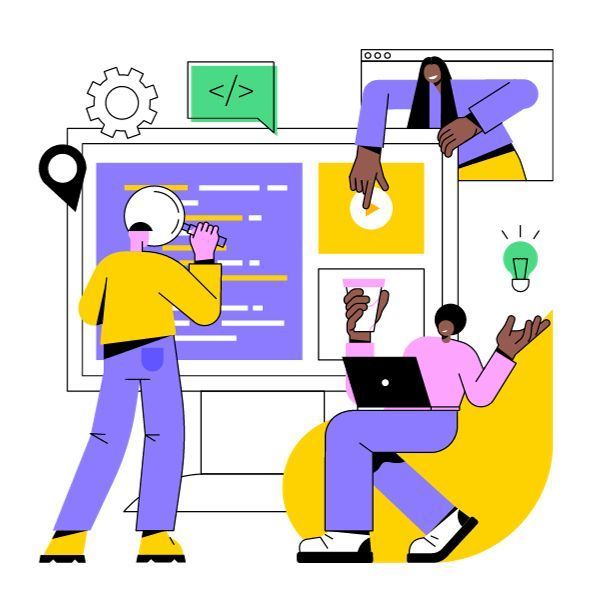spaceforthought - UI/UX Design & Brand Design
Ethics in Design –
Taking a stand for human rights
Design goes beyond just aesthetics; it is a form of communication. Texts, colors, and shapes all convey messages, values, and attitudes, whether it’s on a flyer, a yogurt pack, a logo, or an interface. In a time when democracy and human rights are being questioned, designers have a special responsibility towards society. It's not just about creating visually appealing designs; it’s about making ethical choices.
But how can we incorporate ethics into our everyday design without being overly flagrant? It begins with listening. We need to be attentive, understanding nuances, and grasping the precise definitions of terms, along with their connotations in different contexts. We should seek to understand why something can be hurtful, even if it wasn’t intended that way.
Words also play a significant role. During meetings or when presenting texts, we must actively combat framing. It's important to address and resolve terms that have negative connotations or create manipulative perceptions. For example, ”climate change” and ”remigration” may seem innocent, but they are prime examples of framing. Trivializing climate activists and later condemning them as ”terrorists” is a clear example of manipulative language.
Choosing images and illustrations is not just a matter of creativity; it also holds political importance. By showcasing people who don’t conform to the heteronormative worldview, we can promote inclusivity and offer a broader perspective. Diversity helps depict a more accurate social reality and represent individuals with different identities. Additionally, considering visual impairments by carefully choosing colors, fonts, and text hierarchies is another way we can support inclusivity. Incorporating old text into images on websites ensures that people with visual impairments can access the content as well. This promotes inclusivity in the digital space and provides equal access to information.
Loading times also play a role in inclusivity efforts, as faster loading times make websites accessible to all user groups, regardless of their technological equipment. By integrating inclusive design practices, we contribute to creating an open society where diversity and equality are supported.
The selection of clients and projects is crucial. Democracy and human rights should never be up for negotiation. Our communication should always be inclusive, not excluding or harming anyone. Clients who express anti-LGBTQI sentiments, deny the climate crisis, or justify far-right ideologies are not acceptable.
My experience at I Am Here International and actively counter-speaking on social media for years have sharpened my sensitivity to these issues. Fortunately, my clients also share these values and support an open and inclusive society. For example, I had the honor of developing the corporate design for entschwört - Beratung zu Verschwörungsmythen im persönlichen Umfeld, an organization that provides counseling on conspiracy myths in personal environments. I also had the privilege of working with LIFE Bildung Umwelt Chancengleichheit Berlin, which advocates for gender equality and protection against discrimination, among other things. Another project I supported was designing a CityCard postcard for elly, an organization that advises and supports individuals affected by hate speech in Thuringia.
We must make conscious decisions and promote a design culture that strengthens values and respects the foundations of our society. As creatives, we have the power to actively contribute and make a difference.



